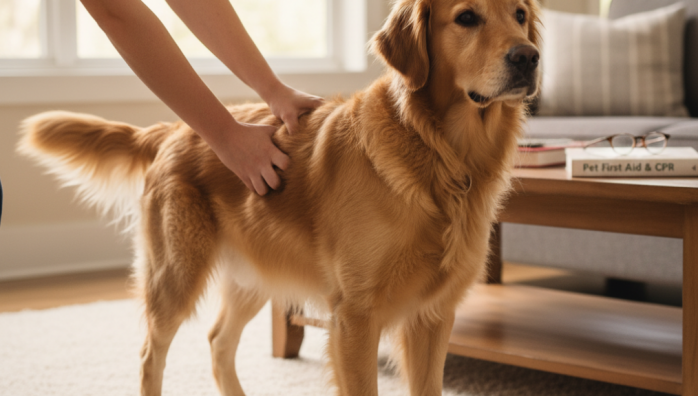Pet Choking Relief Steps for Owners
by admin in Pet Care Basics 11 - Last Update November 18, 2025

I\'ll never forget the sheer panic that washed over me years ago when my usually goofy Labrador suddenly went silent, his body rigid, eyes wide with fear. He\'d been chewing a new toy and a piece had lodged in his throat. In that moment, I realized all my years of pet care experience meant nothing if I couldn\'t act. It was a terrifying wake-up call, and it’s why I’m so passionate about every pet owner knowing these fundamental, life-saving steps.
Recognizing the signs of choking in pets
It\'s not always as dramatic as you see in movies. Before you can help, you have to know what to look for. Based on my experience in wellness clinics and with my own pets, the signs are often universal between dogs and cats, though they can be subtle. Watch for:
- Pawing frantically at the mouth or face.
- Gagging, retching, or coughing forcefully but producing nothing.
- An inability to swallow.
- Difficulty breathing, wheezing, or making high-pitched noises.
- Blue-tinged gums or tongue, which is a sign of oxygen deprivation and a severe emergency.
- Obvious distress, panic, or collapsing.
Honestly, the silence is often the most chilling sign. A pet that is trying to cough but can\'t make a sound is in serious trouble.
Immediate actions for a conscious, choking pet
Your calm is your pet\'s best chance. I know it’s hard, but taking a deep breath allows you to think clearly. If your pet is still conscious, here is the sequence I was trained to follow.
Step 1: Gently restrain your pet and check the mouth
First, secure your pet to prevent biting out of panic. For a dog, you can place one hand over the top of their muzzle and gently lift their lips to open the mouth. For cats, it can be trickier, but a gentle scruff can help. Look inside for any visible object. If you can see the object and can easily grasp it with your fingers or pliers without pushing it further down, carefully remove it. Be very careful; I\'ve seen well-meaning owners accidentally push an object deeper.
Step 2: Perform back blows
If you can\'t see or easily remove the object, the next step is to try and dislodge it with force. For both cats and small dogs, I hold them with their head angled down and deliver five firm, sharp blows with the heel of my hand to the area between their shoulder blades. For larger dogs that you can\'t lift, have them stand and deliver the blows in the same spot. The goal is to use gravity and force to pop the object out.
Step 3: Administer abdominal thrusts (the pet heimlich)
This is the step that most people are nervous about, but it\'s crucial. The technique varies by size.
- For small dogs and cats: Hold your pet with their back against your stomach. Find the soft spot just behind their rib cage. Make a fist with one hand, place it in that spot, and use your other hand to give five quick, upward thrusts.
- For large dogs: If the dog is standing, stand behind them and wrap your arms around their belly. Make a fist and place it in the soft spot just behind the ribs. Use your other hand to pull your fist in a sharp, upward motion. If the dog is lying down, place one hand on its back for support and use your other hand to push upward and forward from behind the rib cage.
After each set of five back blows or five abdominal thrusts, check the mouth again for the object. Repeat the cycle until the object is dislodged or your pet becomes unconscious. Remember, this is an emergency procedure, and while there\'s a risk of injuring your pet, it\'s a necessary risk in a life-or-death situation.
What to do if your pet becomes unconscious
If your pet collapses, lay them on their side. Open their mouth, pull the tongue forward, and do one last finger sweep to check for the object. If you still can\'t find anything and they are not breathing, you must begin rescue breaths and chest compressions (Pet CPR) and get to an emergency vet immediately. Someone should have been on the phone with the vet clinic from the moment this started.
The crucial final step: The vet visit
Even if you successfully remove the object and your pet seems fine, a follow-up vet visit is non-negotiable. I learned this the hard way when a pet seemed fine but had internal bruising and a small laceration in their esophagus. Your vet needs to check for damage to the throat, chest, or internal organs from the obstruction or the thrusts. This is my most important piece of advice; never assume everything is okay just because the crisis has passed. Your vet is your partner in your pet\'s wellbeing.












